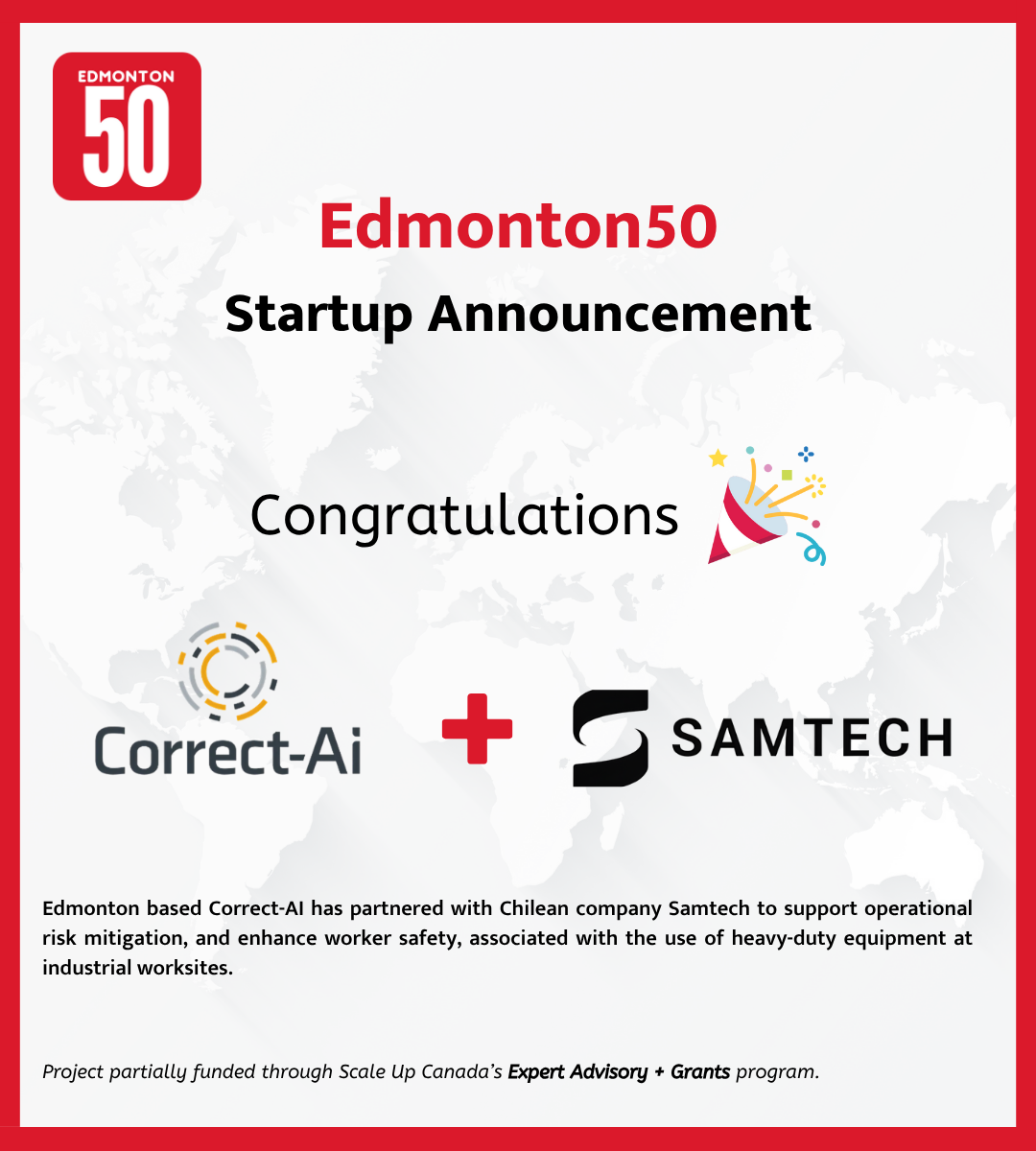
Startup News
Canadian innovators and startups
Edmonton50 company Correct-AI partners with Chilean company Samtech to revolutionize worker-safety on industrial worksites
According to World Health Organization and International Labour Organization studies, annually approximately 1.9 million deaths are associated with work-related causes worldwide, and roughly 4% of GDP is lost to occupational injuries and diseases. Globally, mining accounts for about 1% of the workforce but is responsible for approx. 8% of fatal occupational accidents, while construction accounts for approx. 20% of all workplace deaths despite representing only 7% of workers. Heavy equipment is involved in a significant portion of these incidents.
Use of heavy equipment includes additional dimensions of risk including presence of high energy and mass - when something goes wrong, forces are large, so consequences are correspondingly greater; complex systems - hydraulic, electrical, mechanical subsystems require integrated safety; visibility & blind spots - operators may have limited vision, other workers may enter danger zones etc.; and dynamic interactions - heavy equipment might interact with terrain (unstable ground, slopes), other machines, or overhead utilities.
Direct costs of safety incidents include medical treatment costs, wage replacement for injured workers, equipment damage, property damage, regulatory fines, penalties, citations, cleanup and shutdown costs. While indirect costs include lost productivity, delays, downtime, project schedule overruns, increased insurance premiums, reputation damage and possible loss of future contracts, employee morale impact, reduction in bidding competitiveness, and possible exclusion from public contracts if safety record is poor. By industry analyses, indirect costs surpass direct costs by a factor of 2–3 (or more) depending on severity and inefficiencies. Estimates place the global total cost of injuries and fatalities in mining and construction in the range of USD $125 billion to USD $250 billion per year.
“In complex industries such as mining and construction, where safety is always a priority, Correct AI's technology has significantly contributed to improving safety on site, enabling the recognition of people, objects, and vehicles, and maintaining a zero-accident rate”, according to Juan Francisco Baschmann Henriquez, Commercial Director at Samtech. He adds, “we face the challenge of validating more than 15,000 fatigue and drowsiness events per month. With Correct AI technology, we have integrated a real-time verification algorithm that eliminates erroneously detected events, allowing us to validate more than 200,000 cases and monitor over 2,000 vehicles.”
“Correct-AI fuses Artificial Intelligence with specialized sensors to help heavy-duty equipment operate safely. We combine computer vision, robotics, and artificial intelligence technology to create proximity detection systems which prevent incidents, collect and document data on equipment operation, and increase operator confidence.” says Siamak Akhlaghi, Chief Executive Officer of Correct-AI.
About Samtech
Based in South America, Samtech has operations in Chile and Colombia involved in fleet management, machine performance, and telemetry in a variety of industries including mining, construction, and ports.
About Correct-AI
Edmonton-based Correct-AI is an industrial robotics and Artificial Intelligence company providing solutions improve to safety, efficiency, and productivity on industrial work sites. Correct-AI’s hardware and software are used in challenging industrial worksites to mitigate operational risks to personnel, equipment, and assets when using heavy-duty equipment.
About Scale Up Canada
Scale Up Canada is a not-for-profit dedicated to connecting Canadian innovators with industry experts and strategic investors. Our mission is to drive the global commercialization of Canadian-made innovations, ensure investor readiness for high-potential startups, and build capacity for community organizations working with Canadian founders. This project was partially funded through Scale Up Canada’s Expert Advisory + Grants program.

